|
For the last official week of summer vacation we decided to take a quick family vacation up to the Wisconsin Dells. And while we assumed our pet pig Elly would enjoy the eateries of cheese country we sided with our better judgement that pigs and water slides do not mix and opted for pleading with a close family friend to “pig sit” in our absence. But this would not be the usual drop in animal care of feeding, watering, and walking. We needed a full-fledged porcine housemate. Fortunately for us, we had a long-term family friend willing to take on the challenge of caring for our portly porker. The night before leaving town the husband mentioned to me that perhaps we should “write things out” detailing the daily care of Elly. I agreed. And the most hysterical list of piggy care emerged. Hello! And thank you SO MUCH for caring for Elly while we are gone. While she is a loving, intelligent, passionate animal she has a few nuances we want to forewarn you about! 1. Elly has a biological timer that erupts at exactly 6am every day. It does not matter if this is a day you plan to wake up at 6am. The pig will spring to her feet and barrel across the house honking at the top of her lungs! She wants food. If you try to ignore her and lock her out of your room she will head-butt your door until you wake up. Sorry in advance. She is quite pleasant after she has been fed. 2. You will need to take Elly potty in the morning. She will use her ramp out the back door to get into the backyard. Sometimes she does not want to go out to potty, so just grab a cucumber from the fridge and she will follow you out into the backyard. Just make sure you give her the cucumber. Because it will turn into a battle of the wills if you want her to relieve herself before eating. 3. Pigs are herd animals and can be territorial about their homes and favorite spaces (i.e. the kitchen). You will notice there is a large framed photo of the pig on our kitchen wall. That is because she actually owns and operates this particular room of the house. To earn the respect of the pig you will need to ask her to “earn” her food. You can do this byrequesting she spin for you, sit, or she can high-five. Only feed her after she performs. This will help you earn the respect of the pig. 4. Elly likes to snuggle on the couch at night. But she has gotten a bit portly for jumping up onto it without help. If you find her pacing next to the sofa letting out an intermittent and disgruntled (GRRRUUUNNNTTTT) that means she needs help. Simply lift the pigs front hooves onto the sofa and then situate yourself behind her rump and firmly push up until she climbs her way onto a cushion. Once on the couch she likes her head situated under a pillow and her belly scratched. She also likes to spoon, but I don’t think you’re in that level of a relationship with her yet. 5. There is beer in the fridge. Please drink it. Drink all of it if you need to. 6. If for any reason the pig escapes the back yard and is refusing to come home, simply stand outside with a can of oats and shake it vigorously. The pig will always come home for oats. She can hear this sound a full city block away. 7. You will find that Elly tips her water dish over many, many times a day. This is normal and she will especially make a point to tip it over any time you have just mopped and cleaned the floor. Unfortunately this is completely normal and pigs need fresh water, so go ahead and refill the bowl so that she can tip it over again later! Just keep a lot of towels handy for future spills. You will use a LOT of towels. Thank you SO MUCH for taking care of our sweet Elly! If you need anything at all let us know!! Day 1: The family – “How’s it going with the pig?” The pig sitter – “Oh it’s going… ok I think. She keeps trying to push me out the door when I come home! She literally takes her snout and forcibly shoves me backwards out the door. I kind of think she does not want me here.” The family – “She will come around! Keep making her spin for you and give her lots of treats.” Day 2: The family – “How’s it going today? Any better? Pig sitter – “She wont spin.. or sit.. or do anything for me. She just mows me down and steals my food! I think she has eaten everything in the house. I am going to give her some space.” The family – “Did you find the beer?” Day 3: The family – “Hey there how is it going?? Our daughter wants to face-time with the pig. Can we figure out a time for that?” Pig sitter – “Umm sure we can try that. Right now Elly is guarding the stairs. I am in the basement and she has taken post at the top of the stairs so I can’t come up. Its kind of like we are married. She is sleeping upstairs and I am sleeping downstairs. The family – (we check our security camera, the pig is in fact angrily pacing back and forth at the top of the stairs). “Oh my!! We are so sorry! Try going up the outside stairs…” Pig Sitter – “I did.. and then she runs over and pushes me out the door.” The final day: The Family – “Hi good morning!!! We cant wait to see everyone later today!” Pig Sitter – “Oh yes.. me too! Elly seems to have finally made marginal peace with me. Of course that finally happens now that your coming home.” We arrive home later that day. We excitedly prepare to embrace our porcine companion as we burst through the front door. Elly, on the other hand, is ticked that we vacationed without her. She barks at us, turns her back towards us and STOMPS away. No happy pig greetings, no tail wags, no wet snout kisses, just flat-out contempt. It took a solid day for our piggy friend to come around, and luckily we still have the friend that pig sat for us as well.
Now onto planning our next trip.. anyone know of any pig friendly family vacation destinations!?!? This was so well written (and accurate) that I asked them if I could repost their blog on ours. Thankfully she said yes...but you should definitely follow their antics via their blog: Chicago Pig. Carefully written by Missy Elsen, pig mom 08/2017 https://chicagopig.org/an-open-letter-to-our-pig-sitter
4 Comments
The leaves on the trees are changing indicating cooler temperatures and more importantly, winter time is on its' way. Why is that important to mini pig parents? It means that the time has come to prepare for cold weather. It's best to prepare for the winter months now rather than on the eve of the first overnight freeze. Many many pigs live outdoors all year long, but those pigs have accommodations for that. You cannot put a pig who sleeps indoors outside in 20 degree weather with no outdoor structure to keep them warm. That's cruel and preventable by taking the steps now to be sure your pig doesn't have to suffer. If your home is anything like mine, your pig spends a lot of time outdoors during the day. Like most animals, pigs are not fans of super cold days. Most pigs aren't huge fans of rain or snow either. (though there are always exceptions) Depending on your location, you may have mild or harsh winters and you should be prepared for whatever season is approaching. If you live in an area where winters are relatively mild, you may not need to make many adjustments like someone who lives in Northern areas, where there is often feet of snow on the ground every year, may have to make. So what do you need for the winter for your mini pig? Let's start with outdoor space/housing. Obviously we promote and encourage every pig to spend time outdoors, however, if there is not appropriate shelter or areas for your pig outdoors, this can be problematic. If it's too cold for you outside, it's too cold for your pig. The first thing you should keep in mind is a fenced in or secure yard for your pig. (this is a given and assumed to already be in place regardless of the season) The second thing to consider is an outdoor structure. This structure should be enclosed, free from drafts and have an opening big enough for your pig to get in and out of without having to duck. This space should be large enough to accommodate your pigs size and also roomy enough for your pig to be able to freely turn around. This structure should have a floor of some kind, ideally it would be off the ground. The contents inside your structure are almost as important as the structure itself. There must be some kind of insulator during the cold season. Some have purchased heat/AC units for their pigs outside house while others are a bit more conservative, nonetheless, there must be something to keep your pig warm. Insulation can come in many forms, some use blankets, straw, hay and/or other things they have within the household. We do not recommend the use of blankets as many pigs will rip them into pieces and the possibility of an obstruction is increased tenfold. There is a risk for choking as well. There is an argument over which is better, hay or straw. I feel like this is a personal decision, but heres some information that you may find useful about these 2 things. Straw, the dry leftover stalks from harvested crops, repels moisture, making it the best bedding for outdoor shelters.... The easiest way to tell the difference between straw and hay is the price: hay generally costs two or three times more than straw. Straw is normally used for a bedding material, while hay is used as a feed supplement. Straw is dried out and works well for building nests and providing cushioning for animals to sleep in. It is not moist like hay and is unlikely to mold. There are various different types of hay available such as timothy, alfalfa, etc. but hay is generally grasses, and also some grains, leaves, and legumes that have been harvested, dried and baled for use as animal fodder (or feed) before the seeds have formed (the formation of the seeds lowers hay’s nutritional value). Straw is primarily livestock bedding. Straw is a by-product of the harvest, usually the stalks and stems of the cereal grains or grasses such as oats, barley, rye or wheat, which are harvested after the plants are dead, so straw is far drier and doesn’t smell nearly as good, although I think it does still have a nice, albeit it more faint, farm-y smell! Occasionally there will be some kernels left at the tips of the stalks (the chickens love to eat those!), but straw is mostly hollow stems. Although pigs can eat straw, there isn’t as much nutritional value in straw as there is in hay. Because of the hollow stalks, many say that straw doesn't insulate as well as hay, but as I mentioned before, that is a personal decision you have to make. Straw typically costs less than hay and your pig may snack on the hay that's being used for their bedding in an outdoor enclosure. Straw: repels moisture, cheaper, lasts longer. Hay: more efficient as an insulator, can also supplement feeding, can mold, so it will need to be changed (or at least checked) more frequently. The use of heat lamps is highly debated. There are safe ways to incorporate heat lamps into your pigs space, but SAFETY is key. You cannot use a heat lamp in small areas where your pig could get burned or the heat lamp could heat up anything that will catch fire. You must ensure your pig is safe first and foremost. I am not an expert on heat lamps, therefore, I can only say use common sense. If you are going to use a heat lamp or any device that heats a surface directly like a heat lamp, you will need to be sure the contents below are flame resistant or the device is up high enough where it cannot do harm to your pig. If it's especially cold outside, a pig will snuggle up to a heat source and will likely lay there and get burned and not even realize it. They certainly do that in the summer months laying in the sun. Acorns. UGH. If you are lucky enough to live in an area that is shaded by beautiful oak trees, you likely suffer through acorn hell like others of us have to do. Why is this a problem? Who doesn't love a great oak tree? ME! When eaten in excess, acorns have the potential to be toxic to pigs. Some pigs can eat them and never experience any issues while others eat them and start developing kidney or liver issues. Again, this occurs when acorns are eaten in excessive or massive amounts, not an acorn scattered here and there. If you have a pen or backyard with a lot of acorn trees, you may or may not have noticed acorns on the ground. If you have one pig who spends time outdoors and notice your single pig snacking on these acorns, this may be a problem later in the season. This isn't always the case, so please don't panic. I am simply mentioning it because it is a possibility. My own pig was diagnosed with acorn toxicity a few years ago because of excessive acorn consumption. So how do you handle ankle deep acorns and a mini pig? You can rake them up and remove them, you can cut down trees or you can do what I do and use a "yard vacuum" or shop vac to collect as many acorns as possible when you can. My routine includes getting up 30 minutes early and vacuuming my yard before the morning feeding. I do this a 2nd time in the afternoon to collect acorns that have fallen throughout the day into my backyard. There are times when tree removal is impossible, like literally. If you happen to live on the water, some trees are protected by waterway laws, or perhaps it isn't financially feasible to remove offensive trees or maybe you love the trees and shade they provide. Again, just something to be aware of and prepare for should you have excessive amounts of acorns that fall into an area that your pig has unlimited access to. How do you get an unwilling pig to go outside on those frigid days? Great question. This is a common problem for many of us actually. And there is a simple solution too. Feed your pig outside. Period. Guess what? Your pig will willingly go outside because your pig will want to eat. Some use treats to coerce a stubborn pig to go outside to potty or just spend some time outside. While this is usually effective, it isn't the ideal solution. Making outdoor time part of your pigs routine, a mandatory part of their routine, this doesn't leave much room for protest on your pigs part. Feeding your pig outside accomplishes a few things, one: provides outdoor time, two: promotes activity in general, three: eliminates a messy floor from a sloppy eater, four: lays groundwork for the overall routine so you don't have to fight with your pig to go outside during inclement weather. If you have some method that works for you, obviously keep it up. But keep an open mind because there may be other methods and/or something that is more effective or efficient. What about ice? That is definitely something people need to be mindful of BEFORE the winter season is breathing down our necks. Often times, storms are predicted, but there are times when we are surprised by snowfall or ice storms. In these cases, there isn't much you can do as far as preventative measures are concerned, but you can certainly have the tools needed to handle situations like that available to you. Keep a tarp on hand, keep a snow shovel in your garage, have basic things to help you when surprise storms occur. Using a tarp to cover walk ways can leave an essentially untouched area for your pig. I use tarps to cover a path on my back deck, my pigs ramp and a path all the way to her outdoor house. The tarp is laid down before the storm and when my pig needs access to those areas, i simply pick the tarp up which also removes any snow or ice that is on top of it leaving a nice clean ground/surface for my pig to walk on. While it's not a perfect solution, it is an effective way for me to keep an area clear of any snow or ice when my area has a freak snow storm. (I live in coastal Virginia, it's rare that we have significant snowfall or ice storms) But just last year, we had blizzard warnings in my city and even though my city wasn't as prepared as I would've liked them to be, my pig didn't notice much change in her primary areas as I kept those areas completely clear during the height of the storm. Sawdust is another pig-friendly product that can be used to reduce ice/snow on surfaces where your pig needs to walk. Pigs that can't get traction is an accident waiting to happen, so preparing for worst case scenario's is the best way to prevent accidents or injuries. Keep in mind, with colder weather, the grass isn't going to be growing limiting the desire to forage around eating it. Have a back up plan. Create some enrichment items for your pig. You can easily build things using inexpensive items found at most home supply stores like Lowe's or Home Depot. PVC can be used for enrichment by building a stand (however you wish) and drilling holes in PVC, using rope to suspend it from the stand you build or use and fill with treats that will fit through the holes you drilled can be something your pig uses on a daily basis that also provides stimulation. Activity and exercise needs to be encouraged during the colder months as winter weight gain can be a problem due to the drop in activity/exercise when it's cold outside. The less common, but equally important things that you should be aware of are things like antifreeze leakage, winterizing of pools and/or other household things, poisons (like rat poison or snail poison), the use of salt for melting ice....just know what's being used in the areas your pig has access to.
Hopefully these tips help you prepare for the upcoming winter season. Feel free to read more about winter time concerns and mini pigs by clicking here. I have read some ridiculous articles before with regards to "teacup" and "micro" pigs, but I hadn't seen one that says rescues and sanctuaries say these pigs don't exist simply so they can "make money off the donations". Not only is this absolutely absurd, but also so far from the truth that it isn't even funny. I thought I would address this article question by question. Let me add, I do NOT have a pig sanctuary or rescue, I am NOT a breeder nor do I have any products to sell. SO I have nothing to gain or lose by posting my opinion to each question. The original article will be in red, my responses/comments will be in bold black. Teacup pigs have been a growing trend in the united states over the last several years. Some pet owners believe they make better pets than dogs or cats. There is a lot of information and misinformation out there about teacup pigs. So we dug in and have done a little research and tried to find out the answers to some of your questions.
Teacup pigs are still a scam and one of the most misrepresented/inaccurate pet sale scams out there. Many will read over and over that teacup pigs do not exist, but they want a small pig so bad that they will bypass the 30 articles that tell them that and read the one lonely article with a breeder that claims to have teacup pigs and take it as "The Word" as far as pigs are concerned. Teacup and/or Micro are two words that do not belong in the same sentence as pig. Click here to read our article about teacup pigs. How much do teacup pigs weigh? Teacup pigs weight can vary quite a bit depending on the breeder. PamperedPiglets.com who is said to have the smallest pigs get on average 15-40 LBS as adults. Most other breeders pigs average between 30-100 LBS. Size wise they are a lot smaller than pot belly pigs which can end up being 100-200 LBS. (original article response) Naturally my response will be COMPLETELY different. Since there is no such breed called a teacup pig, nor are there breeders that can consistently produce pigs that would be able to fit in a teacup once fully mature at 5 years or older, this is not a question that can be answered truthfully. (Because they don't exist) If ANYONE were to actually research "teacup pigs", they would quickly see article after article, website after website report that teacup or micro pigs do NOT exist. Period. SO how much will a teacup weigh? The same as any other mini pig-between 75-300 pounds. We haven't just "talked" to "teacup" pig parents, we actually went a step further and collected pictures of their "teacup" pigs and added them to our page, realistic sizes of mini pigs. Why are teacup pigs so expensive? True teacup pigs are still very rare. It takes years of crossbreeding smaller adult pigs to be able to produce this tiny breed of pigs. This is why you will see some breeders have more expensive pigs. Be careful with breeders who sell their pigs too cheap you usually always get what you pay for. Real Teacup pigs will cost between 1,500-3,000. This nonexistent breed of pig is expensive because people continue to pay the ridiculous prices for them and soon realize that a pig is not for them or these "teacup" pigs quickly outgrow the size expectations. Inbreeding to try and produce a smaller pig is not a best practice and should be discouraged in general. This is how people end up with genetically defective pigs that do not live a long life or end up with multiple medical issues. What is the difference between Teacup pigs, Micro Pigs, and Mini pigs? These are all names for similar types of pigs. Some teacup pig breeders will call their pigs super micro teacup pigs which usually means it is just an extra small teacup pig. So far, I am NOT impressed with the journalism and lack of research done. Those terms are all marketing terms used to entice you to purchase an overpriced pig from someone who has no problem with using deceptive words to lead you in that direction. The easiest way to address this question is to tell you the common theme about those 3 terms, NONE OF THEM ARE ACTUAL BREEDS OF PIGS! Teacup-not a breed, Micro-not a breed, Mini-not a breed. Those are all adjectives, that's it. Why is there so many negative articles about teacup pigs? From what we have been able to tell there are a few reasons why there are negative articles about teacup pigs. There have been plenty of backyard breeders selling pot belly pigs as teacup pigs and there are also a lot of sanctuaries that make money through donations. We have also found a lot of article writers just giving their opinion and saying whatever they can to drive traffic to their articles so they can get paid from advertisement they have on the page. There are plenty of happy teacup pig owners out there would have had their pigs for several years. You just have to be careful who you buy the piglet from. I wish we did have advertisers to "make money" from as the author suggests. Our website COSTS money to run, we literally do not make a single penny from having an educational resource for pig parents. So our articles are from experience, veterinarians, other pig parents, etc. NOBODY pays us to publish anything on our website. Backyard breeders are the reason why this author thinks there are teacup pigs, but apparently they weren't resourceful enough to actually look up breeds of pigs using a credible resource to see that potbellied pigs ARE mini pigs. Mini is a descriptive word used to differentiate between farm/full sized pigs and miniature versions, such as the potbellied pig. Their article is obviously opinion based because there is NO scientific evidence to support what was said in that statement. I find it offensive that pig rescue/sanctuaries were accused of "making money from donations" even though I am not a pig rescue myself. I DO have several friends that are into rescue and let me clarify....most of them live paycheck to paycheck, often NOT having the luxuries that some of the rest of us have like all the channels on cable TV, no vacation, no new clothes, no extra money to do this or that. They are NOT "making money" by way of donations, when people actually donate. Donations are typically accepted, but it is apparent that this person does not understand or know how many "teacup pigs" are abandoned and need an experienced rescue to step in and take that starved pig or 200 pound pig into their homes, typically needing to be spayed and/or neutered because the "backyard breeder" doesn't tell them how important that part is either. Bringing a pig to a rescue COSTS these people/organizations money. Donations do not cover much of what all a pig needs, to those who actually receive donations. Some rescues have sponsorship programs, but that $25.00-50.00 a month, while this does help offset some of the costs to run an organization like these rescues, it may pay for the food for that pig each month. That does NOT pay for any veterinarian bills that may have occurred, no hay/straw, no shelter, no kiddie pool or anything else. While donations are ALWAYS appreciated, they do not typically "make money" and usually spend their own hard earned money caring for other peoples pigs every. single. month. I get more upset with the responses they gave for each question, I feel like this is a piece of irresponsible journalism and does not at all represent what the majority believes to be true. However, because of people like this and poorly written/researched articles, there are people out there who want to believe so bad that these pigs exist, that they read trash like this and think someone knows more than experienced pig parents or the hundreds of thousands of pig caretakers out there who actually already have pigs or have seen and/or dealt with these things firsthand themselves. Are teacup pigs starved to stay small? As silly as this question may sound there are some fear based articles that have tried to influence people that pigs are being starved in order to stay small. You can’t starve a horse into becoming a miniature pony and you can’t starve a hog or pot belly into becoming a teacup pig. The person who wrote the article is correct that you cannot starve a horse into becoming a miniature pony, especially since those are actual breeds of different animals. The main difference between a horse and pony is the height. Nonetheless, there are horse breeds and there are pony breeds. You can, unfortunately, stunt the growth of a pig via malnourishment. This does come with major consequences, of course, but many people do just that to be able to show a smaller pig and some unsavory breeders/caretakers will even go a step further and feed extra so they don't look starved later in life just so they can say their pigs stay small. Its a sad world when animals are abused for money and that is EXACTLY what starving an animal is: ABUSE. The articles you read about pigs being starved aren't "fear based", they are reality. You should NEVER be able to see the facial bone structure in a pig, you should be able to feel hip bones, but you should never be able to see them. A starved pig looks sickly, they lack the spark in their eyes and coat. They aren't typically very active pigs. There have been genetic defects that have left pig parents with much smaller pigs, unfortunately, most of these pigs do not live a long life leaving a broken hearted family to pick up the pieces. Smaller doesn't always mean better in pig world. Click here to read an accurate and truthful article about starving pigs. Are teacup pigs legal in most areas in the United States? Teacup pigs are now legal to have as pets in most areas. You can always check with your city to make sure. WRONG. So many people have had to battle city ordinances specially banning pigs from living within city limits that we were used to signing multiple petitions each week. Pigs are illegal in A LOT of cities/counties/towns, so please check your specific city ordinance before adding a pig to your family. Click here to read more about zoning ordinances and your pig. How long do teacup pigs live? A lot of people don’t realize how long teacup pigs live. Teacup pigs live between 10-15 years. Make sure you take that in consideration if you decide to get a teacup pig. A pig that this author would consider "teacup" that I would likely consider "starved" if only 15 pounds at 5 years old, probably wouldn't survive to the 5th birthday in my opinion. The smaller pigs that I have seen/heard of, if not starved, have had genetic defects that ultimately caused an early death. So I would say that starving your pig to keep your pig small would essentially shorten the lifespan by at least 10 years to less than 5 years old in most cases. The average lifespan of a healthy pig that is appropriately cared for is between 10-20 years on average. Are teacup pigs clean? Teacup pigs can be clean but also don’t mind getting dirty. Just like a normal pig they like rolling around in the mud on a warm day. The teacup pig owners we have talked to claim that their pigs are cleaner than dogs and cats. Having any type of pet will take work and training though. Pigs, in general, are clean animals, I will try to avoid the teacup aspect of the article at this point. Pigs will wallow in the mud to 1. cool off 2. add a layer of protection to their skin for bugs and also the harmful UV rays. 3. pigs typically urinate/defecate away from their sleeping area. 4. pigs are pigs, so they can be sloppy eaters, often messy eaters actually...mini pigs like to tear up paper and build "nests" with various household items, bags, clothes, rugs, etc. SO yes, they are pretty clean, but they do not usually (voluntarily) get into the water to bathe either, so you would need to lure them into their kiddie pool and keep them busy while you bathe them or lure them into the bathroom in your home to bathe them should a bath be needed. I do agree that training is an important aspect of being a pet parent in general, but because pigs are exceptionally smart, training is necessary to maintain a good balance in the home. Do teacup pigs get along with children and other animals? From all the pics we have seen online it seems like teacup pigs and children love to bond. It also appears they love to play with dogs. Here is a video of teacup pig playing with a dog. Pure ignorance like this is what gets pigs killed. Pigs can get along with children and they can even get along with dogs, but it is dangerous to keep pigs and dogs together and children and pigs often become problematic when you don't understand herd dynamics. Are there any families who have both pigs and dogs? Absolutely. But, the successful families that have both pigs and dogs do so responsibly and keep the animals separated when there is no one there to make sure the animals are safe. Click here to read more about the dangers of dogs and pigs. It is flat out irresponsible to tell people that pigs and dogs do well together and even more irresponsible to encourage it. What do teacup pigs eat? Teacup pigs have a special diet. They are fed twice a day Mazuri Mini Pig Food. They also can have some vegetables as snacks to award good behavior. Each pigs diet will be slightly different. Caloric intake should be based on body scoring, activity levels, metabolism, genetics, etc. Some pigs may require feedings more often while others may only get fed once a day and Mazuri is a great feed, but it is not the only one on the market and feed is a matter of preference. As long as the feed you chose meets the balanced diet requirements, you will need to adjust the amount and frequency based on YOUR specific pigs needs. So while you and perhaps a significant other both eat varying amounts of food, so do pigs. Each pig will be different. If there is a "special diet" a breeder tells you about, and doesn't include a balanced diet or seem like enough to sustain life in an animal, its probably not sound advice and you should seriously reconsider following those directions. Click here to read more about nutrition for mini pigs. Can teacup pigs be housed trained? Teacup pigs can be taught to go in a litter box like a cat or be let out to pee like a dog. Pigs are very intelligent, they can be trained to use a litterbox, they can also be trained to use a dog door, bell, and/or other potty training methods like a potty patch or puppy pads for elimination needs. However, let me add, ALL pigs need outdoor time whether or not they go outside to potty. Do teacup pigs need to be vaccinated? This is something to talk about with your vet. A lot of pigs are not vaccinated and the ones that do get vaccinations usually only get very small doses. Most pigs will need to get Ivermectin for mites. The author of this article was almost right on one question, but they went and added "opinions" which completely ruined the answer. Vaccinations are not usually required unless mandated by a city, so it is absolutely best to speak to your vet about which illnesses/diseases are most common in your area to best determine which vaccinations, if any, would be best suited for your pig. The minuscule amounts referenced above? I have no idea what they're referring to. Vaccinations are usually weight based, so a younger/smaller pig would obviously require less amounts of the actual vaccine as opposed to that same pig 3 years later and 100 pounds heavier needing a larger dose. Parasite control is recommended not only for mites, but also worms that can be picked up as your pig is digging around outside. How are teacup pigs for people with allergies? Many animals lovers who have allergies will look into having a teacup pig. Unlike cats and dogs pigs are hypoallergenic. Wrong again. Pigs are NOT hypoallergenic. Pigs do blow their coats, pigs have dry skin and that often flakes off causing a dander like environment. Their hair bristles themselves can be quite abrasive all by itself, but allergy tests have proven people can (and are), in fact, allergic to pigs. Which gender of Teacup pigs or micro pigs is better to own? This comes down to personal preference. Both male and female teacup pigs will need to be fixed. Both genders are good natured. It is cheaper to neuter a male then it is to spay a female. While I agree that it is a personal preference as to which sex is desired, I also agree that once a pig is desexed, their temperament is their personality and each one will be different, male or female doesn't matter. It IS normally cheaper to neuter a male rather than spay a female up front, however, tusk growth and tusk trims are needed in the long term scheme of things for males whereas it has been suggested that the tusk root closes in females therefore, they do not typically require tusk trims (if they are needed at all). Not all pigs are "good natured", some pigs are cuddly while others may be quite a bit more standoffish. We (as the pig community) tend to glamorize pigs when it may take us 712 pictures to find the ONE Facebook worthy picture to post, but rarely do we disclose how uncooperative our pig was or how we had to bribe them with a box of cheerios to get them in the position we wanted for that perfect shot. What do teacup pigs live in? Living arrangements for a teacup pig should have a private place like a playpen where the pig can go to sleep and bore down into some blankets. I feel like I am teaching pig 101. Pigs need a safe place of their own. Until your pig is potty trained, they should be confined to a small space and gradually introduced to the rest of the home. Odds are, after a couple of months, you will NOT be able to lift your pig to place your pig in a "playpen", so that is NOT ideal for a living situation. You can crate train a pig, or even provide your pig with a room or place in your home with a comfy bed. Most important, you MUST pig proof your home. Pigs will get into EVERYTHING, so if you have cabinets, refrigerators, medicine chests, etc, your pig most likely WILL, at some point, break into those areas and eat whatever is there. That is why it is so important for your pig to have a defined space. Whether or not you chose to house your pig inside or outside is up to you, but you must also make sure your yard is secure and protect your pig from predators, like dogs. Here is a great place to start for new pig parents and highlights these kinds of questions. What does it mean when a teacup pig ruts my arm? Teacup pigs show affection in several different ways. One of them is to rut on your arm. This can seem sweet at first but if it becomes tiresome don’t be afraid to tell the pig to stop. Well, ROOTING is an instinct pigs have and it is common when pigs taken from their mothers too soon continue to nudge or root, like they would do to mama to stimulate milk production, when this occurs. Rooting is natural for them, this is why its necessary to modify YOUR life to fit your pigs life. Pigs need outdoor time or the opportunity to be a pig. Pigs root, they need a place to do that. Outdoors is best, but if weather isn't allowing that to happen or there are other circumstances where your pig cannot go out and dig, you can provide them with a rooting box or other stimulating activity, which we refer to as enrichment, to help curb that natural desire to root. Click here to read more about underaged pig problems. Can teacup pigs learn tricks? Yes teacup pigs can learn to go on a leash and sit. Some Diabetic patients claim that their teacup pig can tell when their blood sugar is too low or high and can be trained to warn them. There are several tricks teacup pigs can learn to do. You just have to train them with small treats. Pigs are extremely intelligent and master simple tricks like sit and spin within minutes. This is both awesome and terrible at the same time. Since they are so intelligent, they do learn quickly, but what this means is that they master these tricks quickly and need something more advanced to keep them occupied. Some pigs are super relaxed and will hang around in the yard, digging some holes, looking for worms while wallowing around in the dirt/mud. Other pigs sit around in the house all day wondering how they can get into that cabinet where they KNOW you keep yummy treats. A bored pig is often a destructive pig. The diabetic patient claiming their pig would notify them of an impending hypoglycemic moment is not a "trick" you teach your pig, this is more of a capacity of a service animal and, at this time, pigs can NOT be classified as service animals, only dogs and in some cases, miniature horses. So while I am well aware of the pigs capabilities of doing more advanced things like notifying of seizure activity, even alerting motorists to a caretaker having a heart attack inside the home, this is something that would take dedication and time to train a pig to do. Pigs can learn many many tricks though and you can read more about teaching you pigs tricks by clicking here. I hope you enjoyed this article. Feel free to comment with more questions you may have. Source: https://awesomepennystocks.com/teacup-pigs-questions-and-answers Unfortunately, there was not a place to leave a comment on the original post cited above which is why I decided to address these same questions myself. It is clear to me that there was NOT a lot of time and research put into this article before publishing. It is disappointing to me that there are still people out there promoting teacup and micro pigs as pigs that exist. They clearly do not realize that breeders will lie to get you to buy a pig from them. They will also tell you they "guarantee" the weight of their pigs and they may even say they accept returns if a pig grows bigger than expected. Have you ever priced shipping a 150 pound pig across the US back to the breeder? And have you considered how you will feel about this pig once you have cared for it for several years? This pig will become part of your family, part of your life and routine. That is exactly what dishonest breeders are banking on, your bond with your pig. Meanwhile, they'll continue to lie and sell pigs using inaccurate terms because they can, and as long as ignorant articles like this are out there for people to see, they'll continue to use those tactics to sell pigs to uneducated and ill prepared families. Do what YOU can to help. Advocate, educate, preach adoption, preach fostering of pigs. Tell people what life is REALLY like, not the Facebook life we are all guilty of living. (I do it too) That is also why we created the website, to tell the truth. The good, bad and ugly truth. Be informed, not impulsive. Being a "legitimate" sanctuary is NOT about being a 501c-3 or how many animals one has in their care. It is about caring well for what you have, within YOUR means, having the ability to carry on without being dependent on others financially, and knowing your limits and sticking to them, whether it is 2 animals or 100.
Keep in mind that just because someone CLAIMS to be a non-profit does not mean they are. There have been quite a few over the last few years that have been proven to be a scam that quickly to come to mind. These people are slick and have all the right words. If someone claims to be a 501c-3, ASK FOR PROOF and do not send a penny until you see it. Know who the people/operators are BEHIND the name of a sanctuary or rescue. If you see only a sanctuary/rescue name but no names/addresses for the operators, do not donate until you know who they are and that they are legit. If you see constant requests for money but little posted about the animal residents, step away. Any good rescue will post pictures of their animals, updated pictures, not the same pictures over and over again. They will provide proof of where the money is going should they be asked to. Also, just because the operators are "friends" with other pig people does not mean they are who they say. Some of these people had many "friends" in the pig world, most who friended them after seeing other pig people among their FB friends or seeing a post they made tugging at heartstrings. Once they had a few hooked, others follow suit like a snowball rolling downhill, none knowing the truth. Their "friends" list fill with people who have no idea who they are. These people did NOT run a sanctuary. Instead, one group was actually scammers who sent pigs to slaughter. KNOW WHO YOU ARE DEALING WITH AND SENDING ANIMALS TO! 501c-3 status means nothing with regards to actual care of the animals. Claiming to be a nonprofit organization may even be false, which is also illegal. You can look up a legitimate 501c3 to be sure it is, in fact, a legitimate organization who has filed for the nonprofit status and registered with the state and IRS. If you see a new sanctuary pop up and immediately start asking for donations for fencing, feed and housing, consider very carefully before contributing in any way. They have not proven themselves to be capable of supporting their new venture on their own and instead are counting on YOU to pay their way. With very few exceptions, they will be unable to support the animals/property without financial help. Do they even OWN the property? Do they know how to properly care for the pigs? Are they, at a minimum, securely separating intact pigs of opposite sexes to prevent breeding? Do they even have a vet??? What are they feeding the pigs? If you see someone continually saying "I will take that pig", "Send them to me", "I can take in all of those", frequently tagging the same someone else to take pigs in need, it could be a very bad situation. There are a lot of flippers out there, breeders claiming to "rescue" when in fact they are looking for more breeding stock, people who sell for slaughter, hoarders, people looking for dog bait animals, pigs to breed for snake food...all sorts of evil posing behind the words "rescue" or "sanctuary". DO YOUR RESEARCH. ASK AROUND. Please note that there are hundreds of LEGITIMATE rescues who are NOT registered non-profits AND there have been some very ILLEGTIMATE ones who were. We, who are private work full time jobs to care for our rescued animals and don't constantly beg for others to send us money to support them, are extremely legitimate. We are proving that we are, in fact, responsible people who do not continually look for others to support our cause. I stand by my belief that if you cannot support the animals in your care with your own hard work, and if you plan to solicit donations from others to do so, you are putting those very animals at great risk when the donations dry up...and sooner or later they will. Economic situations change, interests wane, people move on to other causes that touch them...but the animals you are responsible for remain in your care. Do not have them eventually become someone else's responsibility when the money stops from donations. Start slow and small and be as certain as you can of your own ability to finance your rescue. Own the property you establish your rescue on and have the means to survive without depending on others to pay your way. Only a very few are successful doing so and times are not easy for them, despite having been well established for many years. More and more there are people with outstretched hands begging for funds. Those who donate are stretched thin and may be confused where their funds will be best used when so many hands are waving in their faces. My response is...stay local or contribute to well established sanctuaries or to the new who are known and publicly supported by the old. If someone is desperate for feed or vet money and you plan to help, do so by sending funds directly to a feed store or vet clinic, not to an individual's paypal account. Ask for receipts. Know where your money is going. With the overwhelming number of pigs needing homes due to mass producing by greeders and irresponsible owners, there is a huge need for more sanctuaries. It is a golden opportunity for the scammers to hop on board and blend in. Don't be scammed. Look for the red flags and do NOT give your hard earned money to someone undeserving who may or may not even have pigs in their care. ~Dawn Camp, Camp Skipping Pig Rescue |
AuthorsBrittany Sawyer Archives
July 2019
Categories
All
|
-
- Direct Links To Website Content
- Read BEFORE You Add A Pig To Your Family
- Mini Pig Info Mission
- Teacup/Micro Pig Myth
- What Is A Mini Pig?
- Mini Pig Breeds: Which Ones Are Really Breeds?
- Adoptable Mini Pigs
- Are You As Smart As Your Pig?
- Mini Pig Info Education Series
- Social Media Feeds
- Zoonotic Diseases & Mini Pigs
- Mini Pigs Are NOT Gifts!
- Media/News Links
-
- Pig Health Forms: Tools To Use To Determine If Your Pig Is Sick
-
- Mini Pigs & Erysipelas: Life Saving Info About This Disease
- Dippity Pig Syndrome In Mini Pigs
- Mini Pig Salt Toxicity/Water Deprivation
- Leptospirosis In Mini Pigs
- Swine Pox & Mini Pigs
- Gastric Ulcers: Common Problem For Mini Pigs
- Brucellosis And Mini Pigs
- Mini Pig Pneumonia & Swine Flu
- Foot and Mouth Disease (FMD): A Problem For Pigs In Other Countires
- Pseudorabies: Is My Mini Pig At Risk?
- Mycoplasma Hyosynoviae & Mini Pigs
- Head Tilt In Mini Pigs
- Mini Pig Obstructions: How To Reduce The Risk For Your Pig
- Seizures In Mini Pigs
- Mini Pig Salmonellosis
- PSS (Porcine Stress Syndrome)
- Urinary Tract Infections (UTI) In Mini Pigs
- Urinary Blockages: A Serious Problem For Mini Pigs
- Arthritis And Mini Pigs
- Mini Pig Artophic Rhinitis
- Mini Pig Heart Disease Possibilities
- Common Mini Pig Gastrointestinal Disorders
- Mini Pigs & Pasteurellosis
- Mini Pigs And Rabies
- Mini Pig Genetic Abnormalities
- MIni Pigs & Cancer
- Mini Pig Cough
- Causes For Sudden Death In Mini Pigs
-
- Mini Pig Approved Foods
- Natural Diet For Mini Pigs: How To Create A All-Natural Diet For Your Pig
- Balancing Your Mini Pigs Diet With Activity
- Mini Pig Feed Concerns: Bad/Spoiled Feed
- Mini Pig Nutritional Deficiencies
- How To Estimate A Pigs Weight Without A Scale
- Mini Pig Body Scoring: What Does An Unhealthy Mini Pig Look Like?
- How To Help Your Mini Pig Lose Weight
- Mini Pig Treats And Recipes
- Mini Pig Hydration: The Importance Of Water
-
- Mini Pig CPR/Heimlich Manuever
- Mini Pig Constipation
- How To Treat A Vomiting Mini Pig
- What To Do If Your Mini Pig Gorges On Food?
- Salt Toxicity/Water Deprivation In Mini Pigs
- How To Treat A Fever In Mini Pigs
- Basic Wound Care For Mini Pigs
- Acute Mini Pig Paralysis
- Mini Pig Shock
- What To Do If Your Mini Pig Sustains A Fracture?
- Treatment For Mini Pig Diarrhea
- Hidden Dangers For Mini Pigs: Snakes & Spiders
- Mini Pig Emergency Supplies
- Most Common Mini Pig Problems
-
- Underaged Piglets- The Dangers & Amount Of Care Involved
- How To Estimate The Age Of A Mini Pig
- Mini Pigs and Dogs- Predator Versus Prey- A Risky Combination
- Mini Pig Name Suggestions
- Bathing Mini Pigs
- Mini Pig Travel Regulations
- Mini Pig FAQ
- "Forking" Mini Pigs- No, We Aren't Talking About Eating!
- Mini Pig Potty Training Tips
- Pigs And Stairs: A Potentially Flawed Living Arrangement
- Capturing A Mini Pig On The Loose
- Indoor Mini Pig Spaces
-
-
- Mini Pig Sounds 101
- Mini Pig Harness Training
- Important Information & Tips For Training Your Mini Pig
- Teaching Your Pig To Do Tricks
- Decoding Mini Pig Behavioral Problems
- Mini Pig Behavior: A Quick Introduction
- Common Behavioral Issues In Mini Pigs
- Move The Pig By Lydia Weaver
- Food Aggression In Mini Pigs
- Aggressive Mini Pigs
- Spoiled Pig Syndrome
- ESA (Emotional Support Animals)/Therapy Pets And Service Animals: What Applies To My Mini Pig?
- Mini Pigs Can Be Fun: Training Your Pig Is Key!
-
- Mini Pig Themed Greeting Cards
- Mini Pig DIY Items: Ideas & Inspiration
- Mini Pig Community Chat Forum
- The Loss Of Your Mini Pig
- Website Survey & Various MPI Video Collection
- Mini Pig Research/News Links
- PAL (Pig Advocates League): Our Nonprofit Sister Organization
- Kids Corner: Mini Pig Items For Kids
- Mini Pig Meme's:
- Mini Pig Sitters
- Mini Pig Outreach-Educational Information
- Community Groups For Mini Pig Parents
- "Pigtionary"
- Pig Anatomy and Terminology
- Mini Pig Info Store
- Dear Pig Whisperers Blog
-
- Direct Links To Website Content
- Read BEFORE You Add A Pig To Your Family
- Mini Pig Info Mission
- Teacup/Micro Pig Myth
- What Is A Mini Pig?
- Mini Pig Breeds: Which Ones Are Really Breeds?
- Adoptable Mini Pigs
- Are You As Smart As Your Pig?
- Mini Pig Info Education Series
- Social Media Feeds
- Zoonotic Diseases & Mini Pigs
- Mini Pigs Are NOT Gifts!
- Media/News Links
-
- Pig Health Forms: Tools To Use To Determine If Your Pig Is Sick
-
- Mini Pigs & Erysipelas: Life Saving Info About This Disease
- Dippity Pig Syndrome In Mini Pigs
- Mini Pig Salt Toxicity/Water Deprivation
- Leptospirosis In Mini Pigs
- Swine Pox & Mini Pigs
- Gastric Ulcers: Common Problem For Mini Pigs
- Brucellosis And Mini Pigs
- Mini Pig Pneumonia & Swine Flu
- Foot and Mouth Disease (FMD): A Problem For Pigs In Other Countires
- Pseudorabies: Is My Mini Pig At Risk?
- Mycoplasma Hyosynoviae & Mini Pigs
- Head Tilt In Mini Pigs
- Mini Pig Obstructions: How To Reduce The Risk For Your Pig
- Seizures In Mini Pigs
- Mini Pig Salmonellosis
- PSS (Porcine Stress Syndrome)
- Urinary Tract Infections (UTI) In Mini Pigs
- Urinary Blockages: A Serious Problem For Mini Pigs
- Arthritis And Mini Pigs
- Mini Pig Artophic Rhinitis
- Mini Pig Heart Disease Possibilities
- Common Mini Pig Gastrointestinal Disorders
- Mini Pigs & Pasteurellosis
- Mini Pigs And Rabies
- Mini Pig Genetic Abnormalities
- MIni Pigs & Cancer
- Mini Pig Cough
- Causes For Sudden Death In Mini Pigs
-
- Mini Pig Approved Foods
- Natural Diet For Mini Pigs: How To Create A All-Natural Diet For Your Pig
- Balancing Your Mini Pigs Diet With Activity
- Mini Pig Feed Concerns: Bad/Spoiled Feed
- Mini Pig Nutritional Deficiencies
- How To Estimate A Pigs Weight Without A Scale
- Mini Pig Body Scoring: What Does An Unhealthy Mini Pig Look Like?
- How To Help Your Mini Pig Lose Weight
- Mini Pig Treats And Recipes
- Mini Pig Hydration: The Importance Of Water
-
- Mini Pig CPR/Heimlich Manuever
- Mini Pig Constipation
- How To Treat A Vomiting Mini Pig
- What To Do If Your Mini Pig Gorges On Food?
- Salt Toxicity/Water Deprivation In Mini Pigs
- How To Treat A Fever In Mini Pigs
- Basic Wound Care For Mini Pigs
- Acute Mini Pig Paralysis
- Mini Pig Shock
- What To Do If Your Mini Pig Sustains A Fracture?
- Treatment For Mini Pig Diarrhea
- Hidden Dangers For Mini Pigs: Snakes & Spiders
- Mini Pig Emergency Supplies
- Most Common Mini Pig Problems
-
- Underaged Piglets- The Dangers & Amount Of Care Involved
- How To Estimate The Age Of A Mini Pig
- Mini Pigs and Dogs- Predator Versus Prey- A Risky Combination
- Mini Pig Name Suggestions
- Bathing Mini Pigs
- Mini Pig Travel Regulations
- Mini Pig FAQ
- "Forking" Mini Pigs- No, We Aren't Talking About Eating!
- Mini Pig Potty Training Tips
- Pigs And Stairs: A Potentially Flawed Living Arrangement
- Capturing A Mini Pig On The Loose
- Indoor Mini Pig Spaces
-
-
- Mini Pig Sounds 101
- Mini Pig Harness Training
- Important Information & Tips For Training Your Mini Pig
- Teaching Your Pig To Do Tricks
- Decoding Mini Pig Behavioral Problems
- Mini Pig Behavior: A Quick Introduction
- Common Behavioral Issues In Mini Pigs
- Move The Pig By Lydia Weaver
- Food Aggression In Mini Pigs
- Aggressive Mini Pigs
- Spoiled Pig Syndrome
- ESA (Emotional Support Animals)/Therapy Pets And Service Animals: What Applies To My Mini Pig?
- Mini Pigs Can Be Fun: Training Your Pig Is Key!
-
- Mini Pig Themed Greeting Cards
- Mini Pig DIY Items: Ideas & Inspiration
- Mini Pig Community Chat Forum
- The Loss Of Your Mini Pig
- Website Survey & Various MPI Video Collection
- Mini Pig Research/News Links
- PAL (Pig Advocates League): Our Nonprofit Sister Organization
- Kids Corner: Mini Pig Items For Kids
- Mini Pig Meme's:
- Mini Pig Sitters
- Mini Pig Outreach-Educational Information
- Community Groups For Mini Pig Parents
- "Pigtionary"
- Pig Anatomy and Terminology
- Mini Pig Info Store
- Dear Pig Whisperers Blog


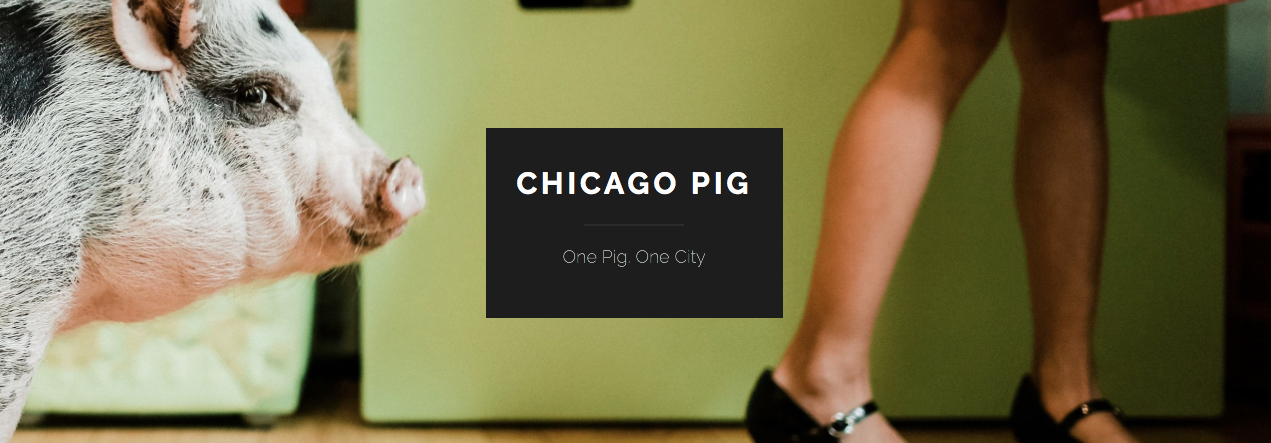
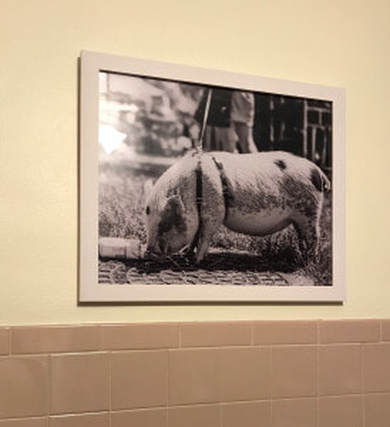
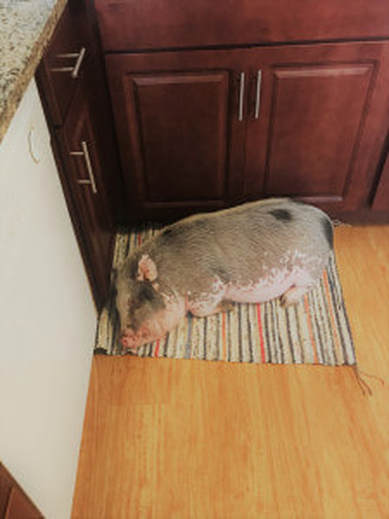

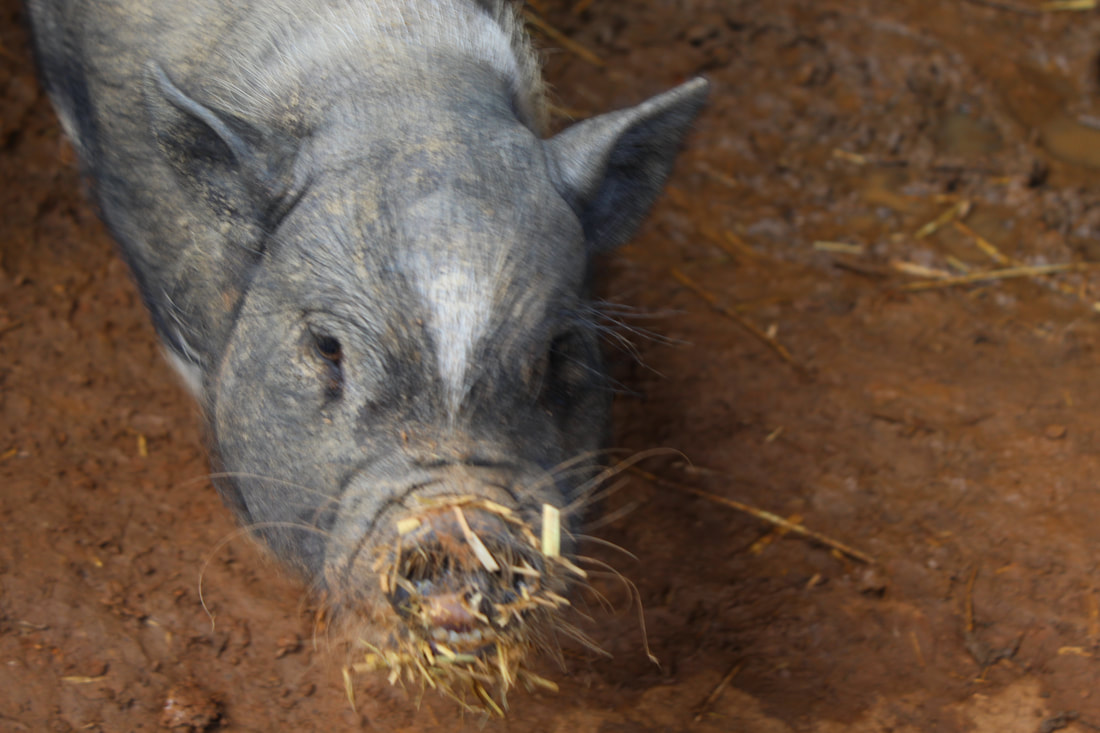
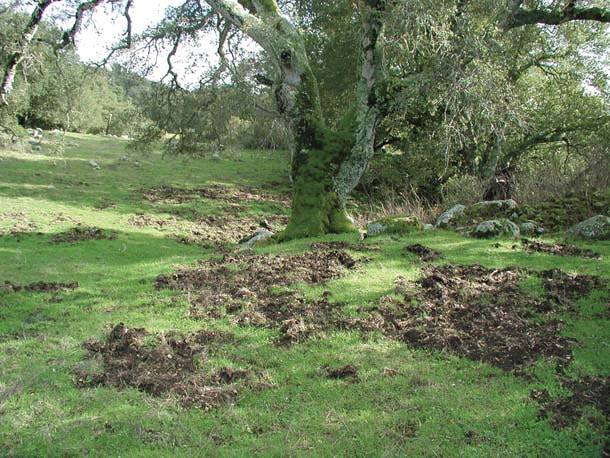
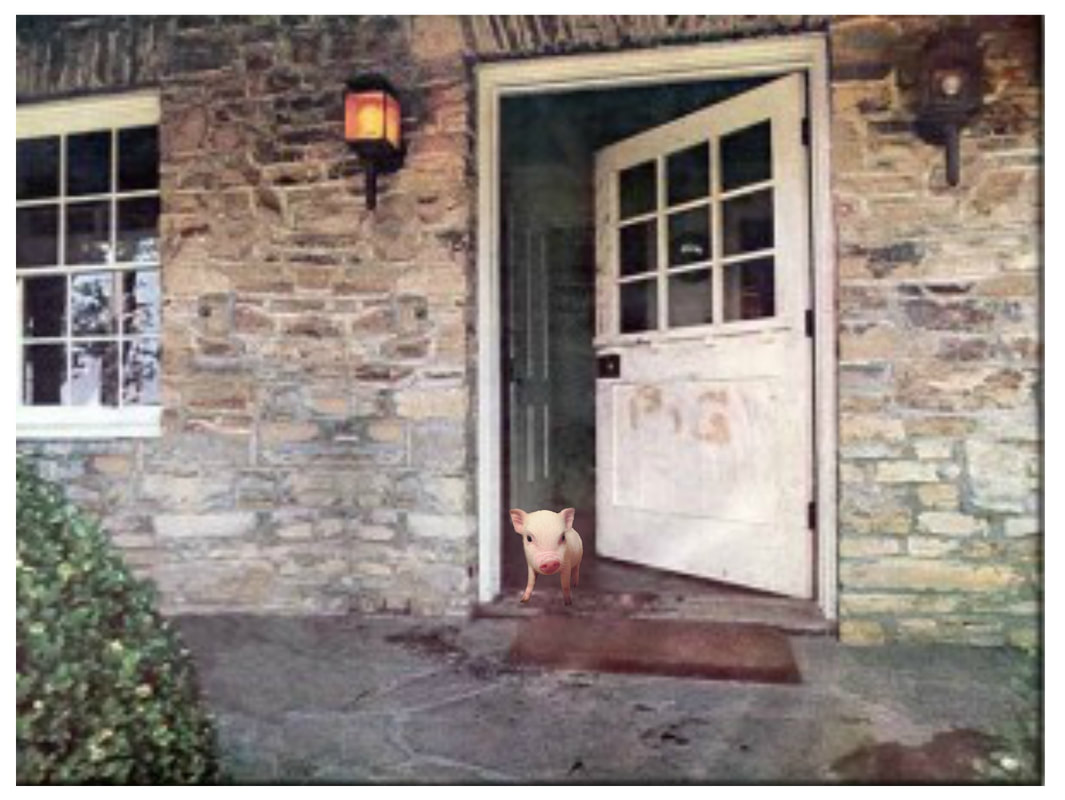
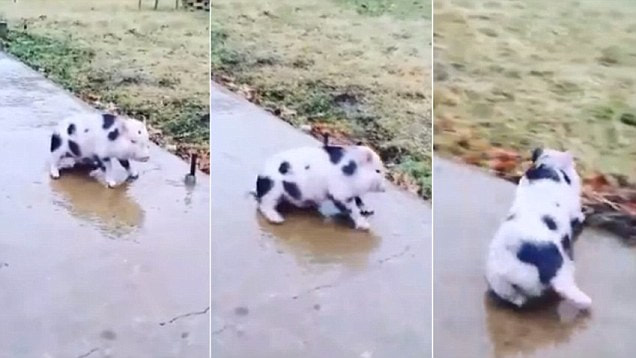
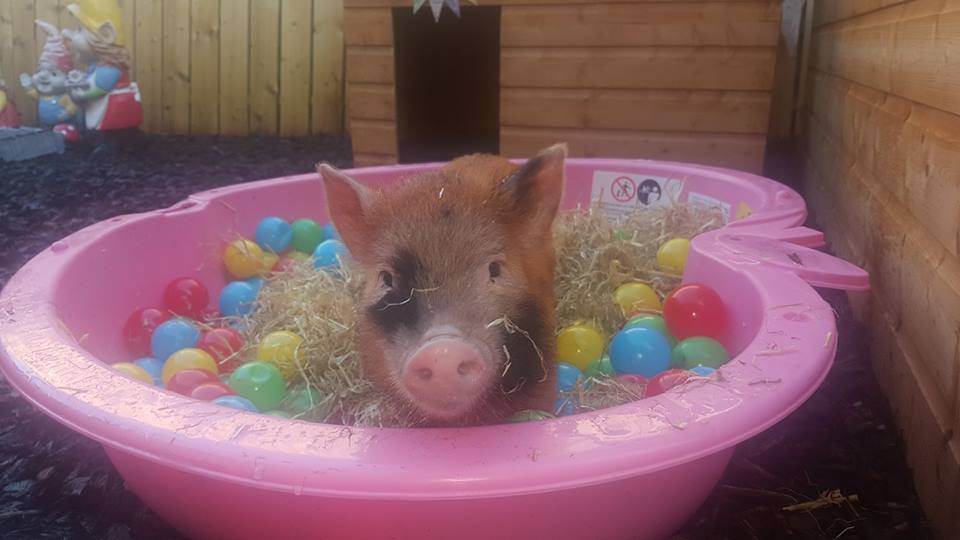
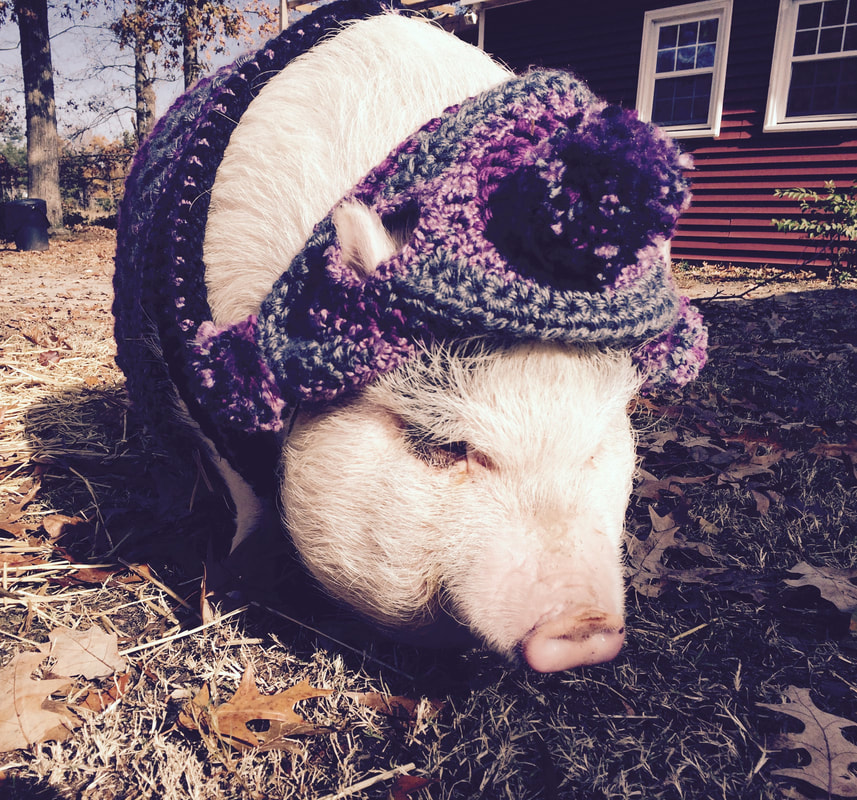
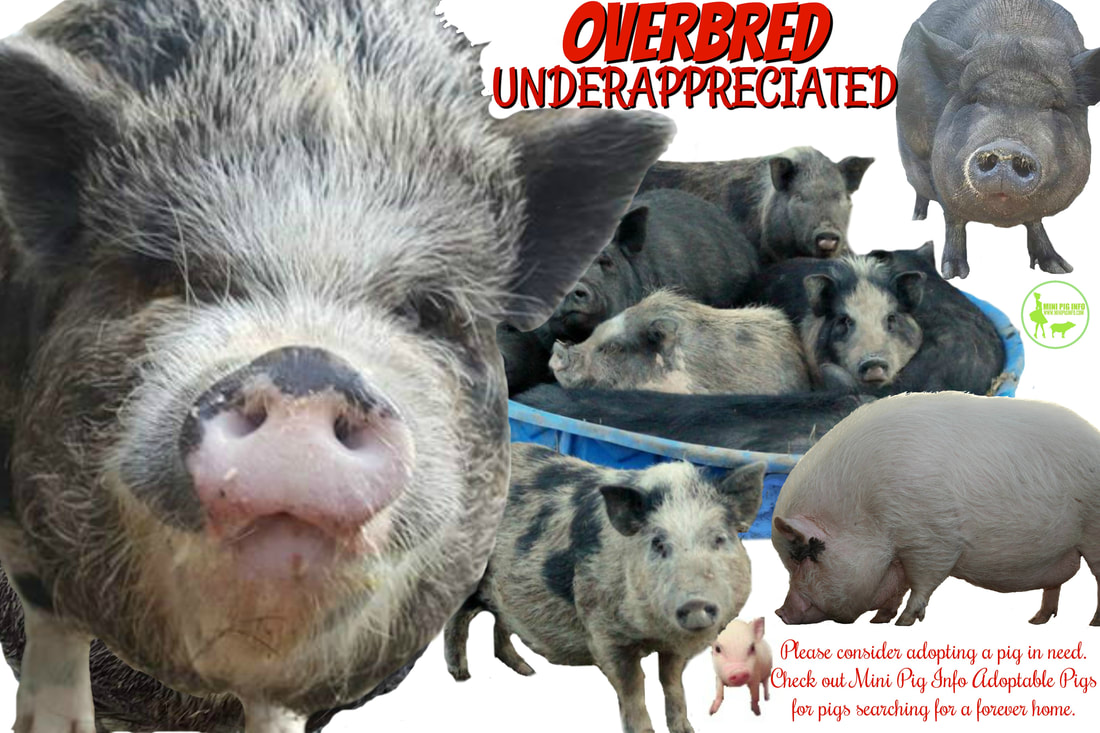
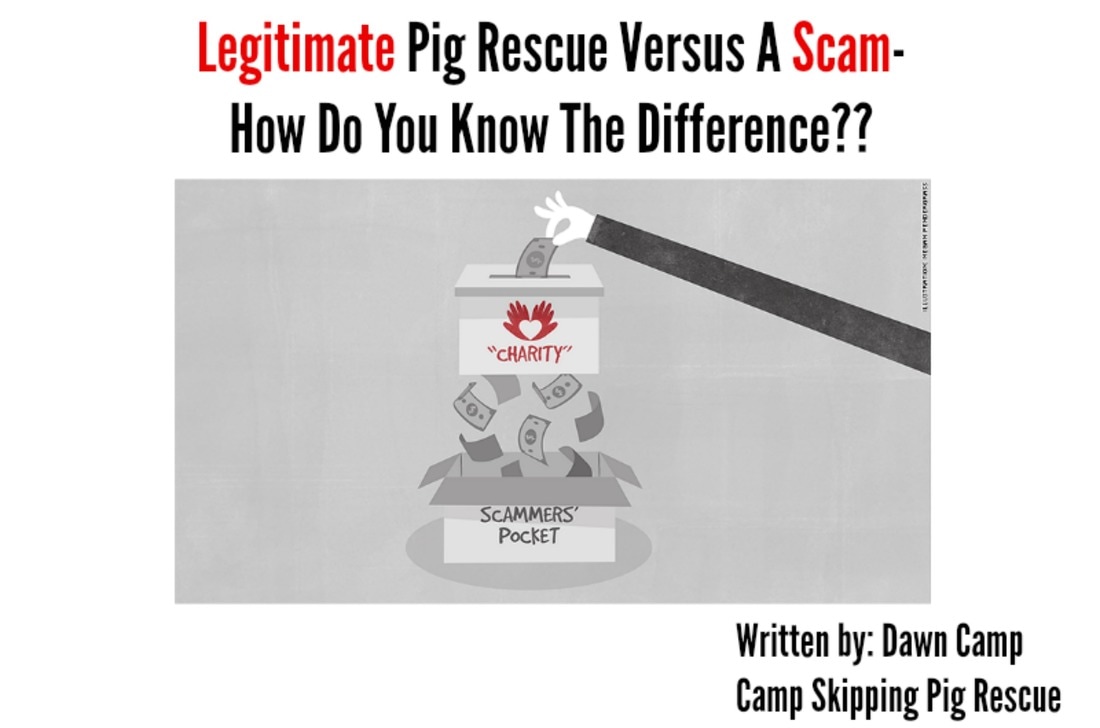


 RSS Feed
RSS Feed